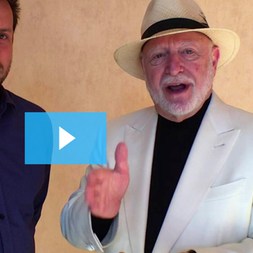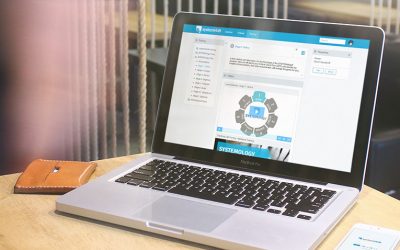Check out this video to see how you can use webinars as part of your sales funnel.
Keen to watch more from the systemHUB workshops? Sign up today for your free systemHUB trial – click here.
Video transcript:
We use the podcast to attract people to our business. Then we use webinars to do a couple of things. In this particular instance, I’m going to show you how we use webinars to sell things. We use webinars to get people into our programs and our products. You can use webinars to educate, you can use webinars to nurture.
Tomorrow morning, I’m running a webinar at seven o ‘clock my time because we have customers all over
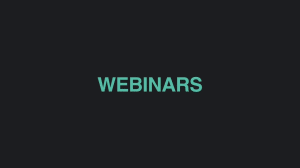
Webinar
the world. That is a training webinar that is for our existing students. It’s a coaching call training webinar.
This system here I’m going to show you, this process here is for taking those people visiting your podcast or your blog, getting them on a webinar and selling from that webinar. I’m not going to go through the sales psychology, I’m just going to walk you through the system of exactly all the moving parts.
So webinars are great for expert positioning. It’s weird, most people won’t actually run a webinar for whatever reason. Usually it’s some kind of deep seated fear they have of the sky falling in and ending up homeless if they run a webinar, which I promise you won’t happen. Because most people just won’t run a webinar, there’s a great opportunity for any of us who are prepared to get out of our nervousness for five minutes and run a webinar.
People instantly think you’re fascinating for running a webinar. It’s like podcasting or publishing any kind of information online. So I think webinars are great for expert positioning and they’re also great for closing sales. You can teach and add heaps of value on a webinar and say, hey, this is what I’ve got. If you like what I’m giving away for free, this is what I’ve got behind the paywall. It must be more valuable than the free material. They’re great for closing deals on leverage rather than doing it one on one.
You want to see a really modern new age tool for mapping out processes? It’s called a whiteboard and some markers. This is how I map out all of my processes these days. I’ve got a whiteboard about the same size as this. It’s a stick-on whiteboard. It’s from a company called whiteyboard.com.au.
I’m going to tell you a story which I tweeted the other day. I don’t care what business you’re in, you’re in the customer service business. Over the last five to six years, everything has gone online. Initially when we started doing business online, everyone forgot about customer service. Everyone was expecting these automated responses.
Now when I send emails to our customers who join our program, I send them a manual email. They email me back and say, I’m not sure if this is really you Troy who reads these emails. But if it is, I just wanted to say this. If they’re in Australia and their mobile phone number is on their contact record card, I pick up Skype and ring them.
They answer the phone. Hello, Paul speaking. Good day Paul. It’s Troy here from WP Elevation. They say, what? Is that really you? They don’t expect that there are people behind these internet companies.
I was researching big whiteboard. I got on Google and I found this company called Whiteyboard. They had this little pop up chat widget, you know those annoying pop up chat widgets on the website? It popped up and this guy said, It’s Matt here from Whiteyboard. Can I help you? I thought, this will be good. I said, yes Matt. Can you tell me a little about blah blah. He said, yes and he told me a little bit about it.
I thought, yes, this chat robot or agent has obviously been pretty well trained. Anyway, we kept chatting. It turns out he was driving around Melbourne and he was monitoring the chat widget on his phone. He said, mate, I’ll be in your area on Friday, do you want me to come out and have a look?
I thought, really? This is amazing. I’m talking to a dude on a website and two days later he was in my office, measured up and installed the whiteboard. Customer service was just astronomical.
Now I use this whiteboard in my office to map out all these processes. I draw detailed processes of how it’s going to work before we open Infusionsoft or before we open ClickFunnels. We do it all on the whiteboard first. So this process turned into this.
The first thing you need when you run a webinar is a registration page. I’m going to talk about tools a little bit later on in the day. Don’t worry about the tools right now but you need a registration page. Then you’re just going to drive people to that registration page however you want.
Use your own list of people, email, twitter, pay per click advertising, partners, affiliates whatever. Drive people to a registration page. I’ve actually done this in the B2B space. As a digital marketing consultant, I’ve partnered with accounting firms to run webinars for the accounting firm’s clients. I have taught them a little bit about digital marketing.
Don’t think that this can just be done in the internet marketing space. HubSpot are a good example of running great educational webinars. At a high level you know how this works. You need a registration page. They register, they end up on a webinar page. At some point either right then they can watch yesterday’s replay or they can go through and tomorrow or the next day they actually get on the webinar.
From the webinar, you will send them to an order form. They will fill in the order form and they’ll buy your product and they end up on a confirmation page or a thank you page. If you think of this as like plumbing in the business, and you tip water into the registration page, there are lots of holes here. There are lots of holes where the water can leak.
I try to plug as many holes as possible because I don’t like people leaking out of my funnel. What happens if they dont opt in on the registration page? We get our friend Charles here to drop some facebook pixels on that page and we retarget them. We follow them around facebook, reminding them to come back and register for that amazing webinar that they were thinking about registering for. You all know how that works.
What happens if they’re on the webinar but they don’t buy? If someone watches less than half the webinar, we’ll track that using Wistia, for example. We’ll run Wistia with Infusionsoft and we’ll work out how much of the video they’ve watched. If they’ve watched less than half the webinar, we send them an email that drives them back to the webinar.
We know you did’nt watch it. What happened?
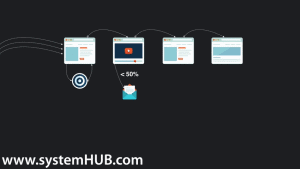
Video Engagement Tactics: Wistia & Infusionsoft
Did the internet drop out or did you get busy? Come back and watch it. We won’t actually say that, we’ll frame it a little better than that.
If they’ve watched between fifty and a hundred percent of the webinar, we’ll send a different email that drives them back to a different recording. I don’t want to drive them back here if they’ve watched seventy percent of it. I want to drive them to a different video.
Let’s say in this webinar I’m teaching three overarching topics. I’m just going to use this as an example. In this webinar, I’m teaching the importance of producing a podcast to position yourself as an authority, the importance of running webinars to close deals and then the importance of systemising your premium newsletter delivery which I’m going to talk about in a moment.
If they’ve already watched seventy percent of the webinar, I know that they’ve got the first two points but they missed the third one. So I’m going to drive them back to a video which is different. It’s just going to talk about the one benefit that they missed. He Paul, great you could be on the webinar the other day. I hope you enjoyed it as much as I did. In this video I’m just going to give you a bit more advanced training on the delivery of your premium newsletter.
I’m not going to get all weird and say, I know you didn’t watch that bit, so I’m retargeting you. That is a bit spooky. I’m just going to say, hey, I just want to go deeper on that thing that I know you missed. Just give them some more free training. Then, guess what I’m going to do from this video here? I’m going to drive them back to that sales page.
Then if they still don’t buy, I’m going to send them another email which drives them to another video which goes deep on one of the other benefits in the video. Again, that is going to drive them back to the sales page.
What happens at this point if they don’t buy? It would be a bit weird for me to continue that conversation. It’s like asking a girl out on a date and she says no three times. It’s best to move on, or at least give it a week. I’m going to send them an email and offer something else that I’m going to talk about that they might be interested in, based on what they’ve originally signed up for.
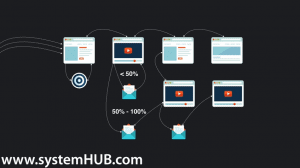
Reconnecting with Declined Offers
I’ll give you a real example. In our business in the business coaching program that we run for WordPress consultants, there are six overarching topics that we talk about. Most people come to us because they want to learn how to write better proposals. But some come to us because they want to scale up their team. They want to know how to employ or outsource staff.
If that’s what they’re interested in, there is no point me talking to them about how to write great proposals and put their fees up. They might be saying, dude, I’ve got so much work I don’t need more work. I need to build my team, your message is wrong, you’ve lost me. So you’ve got to get specific about what you talk about to who, based on what they’ve indicated they want.
Ready to take your systems to the next level?
Organize all your SOPs, processes & policies in one simple, location – start your 30-day FREE systemHUB trial.





